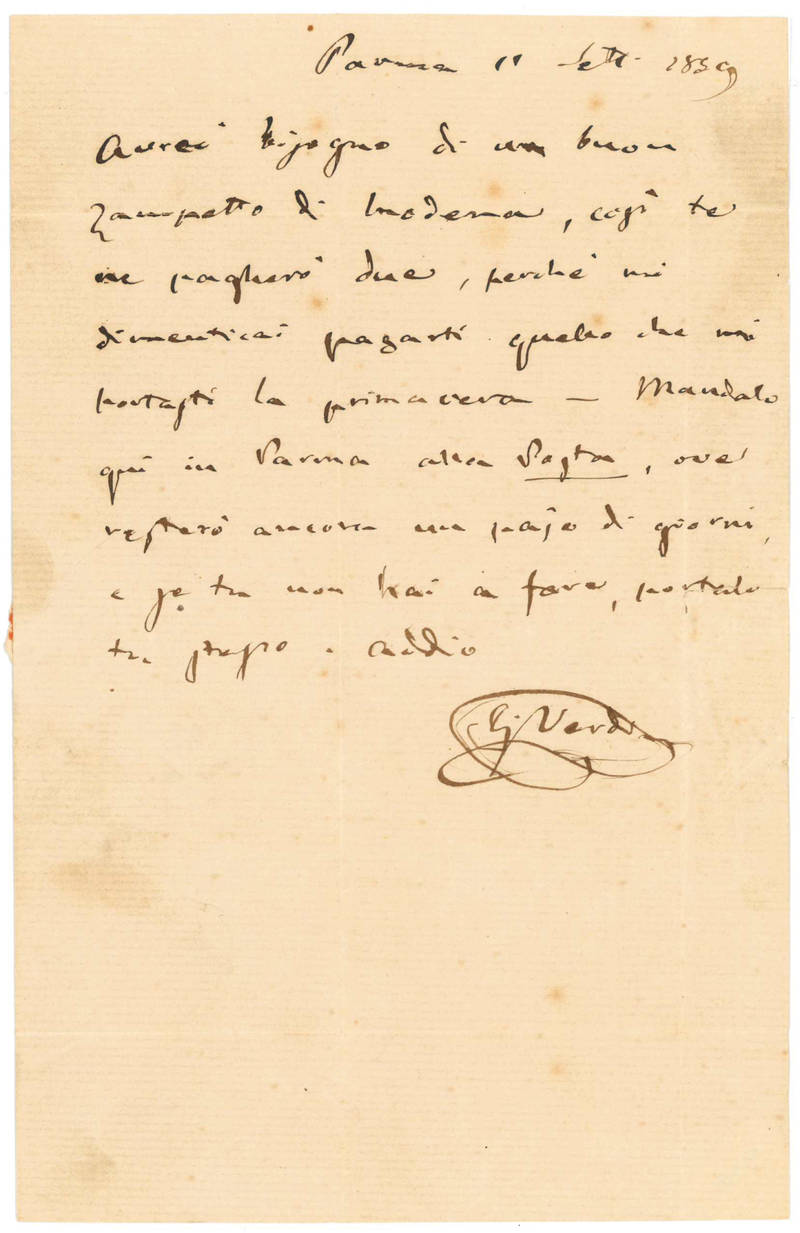GIUSEPPE VERDI AND GASTRONOMY
Bifolium (212x135 mm). Written on first leaf recto only. The second leaf verso contains the name and address of the recipient, the postage stamp and the wax seal. The rare stamp is the undented 20-cent light blue stamp of the Provisional Government of Parma issued in 1859. When Maria Luisa of Bourbon fled Parma, capital of the duchy of Parma and Piacenza, in 1859, she was replaced by a governor appointed by Victor Emmanuel of Savoy, king of Sardinia, who introduced Sardinian stamps in place of the Parma ones from August 1st. This seemed to be a prelude to a forthcoming annexation of Parma to Sardinia, but Napoleon III prevented it. Sardinian stamps could therefore no longer be used, and the government decided to adopt a provisional issue, which bore, within a curved octagon, the simple words “Parma States” together with the value. Traces of folding, some minor marginal tears, but well preserved.
Verdi writes from Parma to a certain Luigi Bezzi, who was presumably the owner of an inn in the duchy of Modena and Reggio Emilia, called Albergo del Canaletto, asking him to receive a “zampetto di Modena”, a sort of boiled sausage made from pork, fatback, and pork rind typical of Modena, today called zampone. It seems that Bezzi was the zampone supplier for Verdi, as the latter promises to pay this time also the one that Bezzi brought him in the spring and he forgot to pay.
Giuseppe Verdi, one of the most renown composers of all time, had a farm in his hometown near Parma and, despite his frequent tours and trips, always tried to take care personally of the farm management, as he was fond of quality products and good food, quite like his fellow composer Gioacchino Rossini.
[12298]





